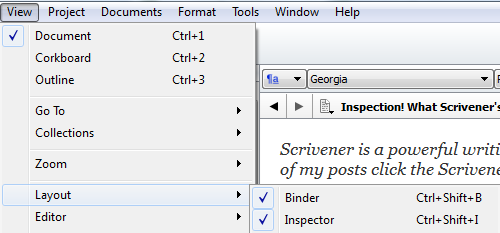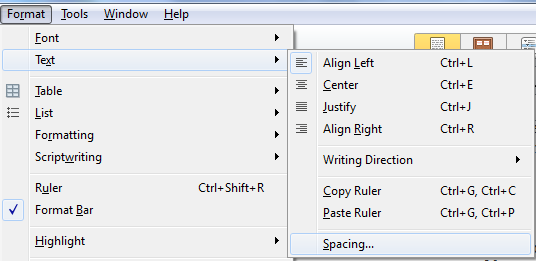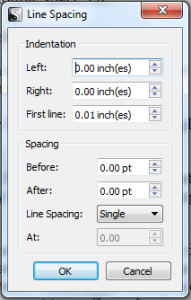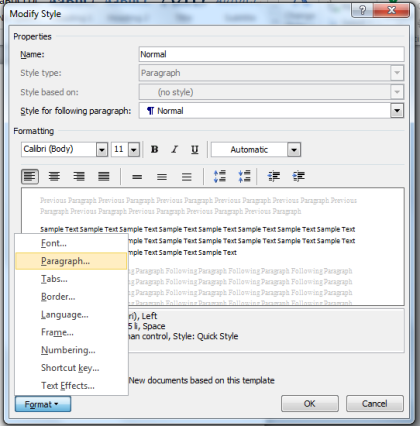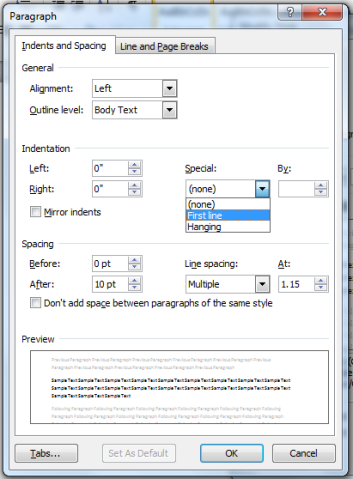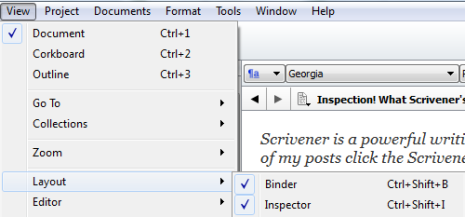P.H. Solomon's Blog, page 303
May 23, 2015
Strategic Usage of Snapshots in Scrivener
Scrivener is a powerful writing tool. I write about it weekly with tips and usage ideas. To read more of my posts click the Scrivener tag or category at the end of the page.
 I don’t normally write about Scrivener more than once a week so I won’t bore everyone with the same topic. But a situation arose that I thought I should really address.
I don’t normally write about Scrivener more than once a week so I won’t bore everyone with the same topic. But a situation arose that I thought I should really address.
Yesterday, someone who reads this blog asked for assistance with a Scrivener problem via Twitter. I was very humbled to be asked so I responded with a few suggestions as to what might be the fix (not knowing the precise details). In the end, the issue was resolved on the other end which was great.
 However, the problem brought up a subject I had planned on addressing in the near future regarding snapshots. Basically, the snapshot function works as a point in time backup of a document in which you are working. While Scrivener does make backups when you exit (unless you change this setting) and you can make backups whenever you want, a snapshot serves a more immediate purpose – a quick backup of current work to which you can easily rollback if necessary.
However, the problem brought up a subject I had planned on addressing in the near future regarding snapshots. Basically, the snapshot function works as a point in time backup of a document in which you are working. While Scrivener does make backups when you exit (unless you change this setting) and you can make backups whenever you want, a snapshot serves a more immediate purpose – a quick backup of current work to which you can easily rollback if necessary.
So, if you are going to make big changes to a document it might be worth your while to make a snapshot before doing so in order to get back to where you were without much trouble. Likewise, when adding blocks of content or trying to fix a problem it might be wise to make a snapshot to prevent lose of any current work.
Follow Blog via Email
Enter your email address to follow this blog and receive notifications of new posts by email.
So how does it work? First turn on the Inspector by clicking on View, sliding to Layout and clicking on Inspector in the flyout menu. You can also turn it on via your keyboard with this command: Ctrl + Shift + I. The Inspector will appear on the right side.
There are six buttons on the lower border, click on the second one from the right the get to Snapshots.From there you click on the + button to add a snapshot of the document in which you are working. It will show the snapshot with a date/time stamp. This is important should you make more than one snapshot. Before attempting to fix a problem it  might be good to take a snapshot. Should the fix work a second snapshot might also be good to have just in case it is needed. In that case you would use the – button to remove the oldest snapshot after highlighting it. Finally, you can use the Rollback button to go back to a previous document version.
might be good to take a snapshot. Should the fix work a second snapshot might also be good to have just in case it is needed. In that case you would use the – button to remove the oldest snapshot after highlighting it. Finally, you can use the Rollback button to go back to a previous document version.
So next time you’re about to make major document changes, take a snapshot. Then if something unexpected happens you don’t need to panic, just rollback to the original version.
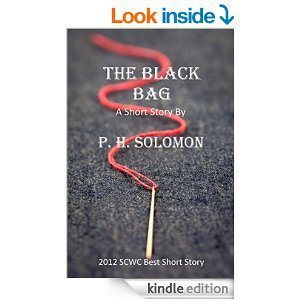 Please share your thoughts and ideas in the comments section. I’d also love to connect with you over social media so check my Contact page for that information. See the News page for announcements and remember to sign-up to receive news and posts by email. I’ve added a new sign-up tab on my FaceBook page to simplify the process. New followers can download The Black Bag via free coupon today! Also, the cover of my book, The Bow of Destiny, was revealed recently so take a look.
Please share your thoughts and ideas in the comments section. I’d also love to connect with you over social media so check my Contact page for that information. See the News page for announcements and remember to sign-up to receive news and posts by email. I’ve added a new sign-up tab on my FaceBook page to simplify the process. New followers can download The Black Bag via free coupon today! Also, the cover of my book, The Bow of Destiny, was revealed recently so take a look.
Follow Blog via Email
Enter your email address to follow this blog and receive notifications of new posts by email.
Filed under: Blogging, Cover Reveal, Creativity, Editing, Indie Publishing, Scrivener, Self-publishing, Social Media, Tech Tips, The Black Bag, The Bow of Destiny, Tips, Twitter, Writing Tagged: Backup, Coverart, creativity, Facebook, Fixes, Indie Publishing, P. H. Solomon, Problems, Scrivener, Self-publishing, Snapshots, Social Media, The Black Bag, The Bow of Destiny, Twitter, Usage, writing








May 21, 2015
Updated: 4 Reasons Why I Published a Short Ebook
With The Black Bag released almost a year I wanted I’m re-sharing why I choose the timing. This story has been published in other venues over the last few years and serves as a resource for my author platform so here are four reasons why I chose to publish it last year well in advance of The Bow of Destiny.
Follow Blog via Email
Enter your email address to follow this blog and receive notifications of new posts by email.
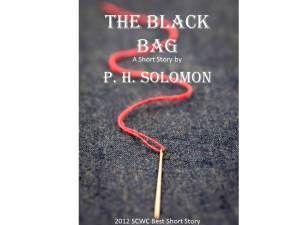
1. For the experience – I wanted to learn more about actually self-publishing and what better way than to format the text and create my own cover. I used Mark Coker’s Style Guide in working through this small project and found it very helpful in understanding all that goes into finishing a product for release.
I’ve learned a lot about self-publishing a book over the last year which has been very beneficial.
2. For the exposure – as an author there are several ways I gain exposure. The first is by beginning to identify my platform with a product. Next a title available during crowdfunding is helpful as a finished product to offer in a reward package and a tangible example of my writing for prospective supporters . Lastly, having a product available is great for extending the reach of my platform during pre-marketing The Bow of Destiny which can be shared on social media, especially Pinterest where a visual representation can be displayed.
Self-publishing a short book gave me access to such venues as Rave Reviews Book Club and having an author page on Goodreads.
3. For promotional value – As I note above, this short story can be packaged a reward in crowdfunding. Also the ebook can be used as a giveaway during pre-release orders and early after the release of The Bow of Destiny.
As you’ll see below I’m going to release at least one short story as an ebook this summer that’s related to my upcoming novel due out in Sepetember.
4. Finally, it serves as a small income stream when not being used for promotional purposes.
UPDATE: This short story e-book was released last year, 6/24/2014. During that time I’ve learned a lot about self-publishing. I plan to release another short story entitled, What Is Needed (though I’m toying with a title change). This new story is related to my novel, The Bow of Destiny, due out in late September (2015).
Have you self-published a short story? Please share your thoughts and ideas in the comments section. I’d also love to connect with you over social media so check my Contact page for that information. See the News page for announcements and remember to sign-up to receive news and posts by email. I’ve added a new sign-up tab on my FaceBook page to simplify the process. New followers can download The Black Bag via free coupon today! Also, the cover of my book, The Bow of Destiny, was revealed recently so take a look.
Follow Blog via Email
Enter your email address to follow this blog and receive notifications of new posts by email.
Filed under: Blogging, Cover Reveal, Fantasy, Fiction, Goodreads, Indie Publishing, Marketing, Pinterest, Planning, Rave Review Book Club, Self-publishing, Short Fiction, Short Stories, Social Media, The Black Bag, The Bow of Destiny, Tips, Twitter, Writing Tagged: Announcement, creativity, Editing, Facebook, Fantasy Fiction, Formatting, Launch, Marketing, P. H. Solomon, Pinterest, Rave Reviews Book Club, Self-publishing, Short Stories, Smashwords, Social Media, The Black Bag, The Bow of Destiny, Tips, Twitter, writing








May 20, 2015
Can Your Character Survive A Flaw?
These days, all characters have flaws be it physical, mental or emotional. So if you give your main character a flaw that is integral to your story can your character survive said flaw?
Follow Blog via Email
Enter your email address to follow this blog and receive notifications of new posts by email.
George R. R. Martin gives us a great example in Tyrion from A Song of Fire and Ice series (better known as HBO’s Game of Thrones). He’s a dwarf with physical limitations to his legs. Not only this but he’s viewed negatively by most everyone around him because of his flaws. He even gains a few more during the course of the series through battle as well as toting a load of emotional baggage. As effective as this characterization is, could he actually survive this flaw as long as he has in real life?
 I’m glad you asked. There’s a more recent archaeological discovery that has subsequently brought just such a real-life case to light. Richard III of England’s grave was discovered under a parking lot 2011. For those who are unfamiliar with Richard, he died in the Battle of Bosworth Field in 1485 which pretty much ended the Wars of the Roses. One way he was identified was by a specific physical handicap – severe scoliosis or curvature of the spine. By severe I mean a 30% curvature – very noticeable. The unusual thing is that all accounts of the battle indicate that Richard fought with great skill and nearly won the battle. He unhorsed a jousting champion, killed Henry Tudor’s standard-bearer and almost killed Henry.
I’m glad you asked. There’s a more recent archaeological discovery that has subsequently brought just such a real-life case to light. Richard III of England’s grave was discovered under a parking lot 2011. For those who are unfamiliar with Richard, he died in the Battle of Bosworth Field in 1485 which pretty much ended the Wars of the Roses. One way he was identified was by a specific physical handicap – severe scoliosis or curvature of the spine. By severe I mean a 30% curvature – very noticeable. The unusual thing is that all accounts of the battle indicate that Richard fought with great skill and nearly won the battle. He unhorsed a jousting champion, killed Henry Tudor’s standard-bearer and almost killed Henry.
A recent episode of Secrets of the Dead actually examined whether Richard III could actually have functioned as a knight on the battlefield. They found a volunteer with very similar scoliosis and began to determine what his physical capabilities were. They realized that Richard would have needed specially designed armor and that the medieval saddle would have benefited him with greater support. In the show, they were able to outfit their volunteer and give him some basic training as a re-enactor. They were even able to show that Richard would have been able to ride in the charge and effectively use weaponry.
 However, physical limitations were also discovered. The re-enactor had less stamina due to the scoliosis affecting his ability to breathe well during exertion. In spite of Richard’s skills and training he may well have been just as limited.
However, physical limitations were also discovered. The re-enactor had less stamina due to the scoliosis affecting his ability to breathe well during exertion. In spite of Richard’s skills and training he may well have been just as limited.
Richard lost the battle for a number of reasons one of which was Lord Stanley’s failure to advance behind the initial charge. But Richard favored fast charges and ending battles quickly. If you lacked stamina for long physical exertions you would likely choose the same strategy. However, in this instance the charge actually took much longer. I could see Richard almost making it to victory only to be thwarted by his own malady as much as other circumstances. This one time, Richard likely misjudged the circumstances due to “the fog of war”. Had he known or thought it through better he might have chosen a different strategy. But maybe all outcomes would have been the same if Lord Stanley was indeed a traitor.
So as a writer of fantasy, I’m looking harder at my future characters and the flaws I can give them just to twist my plots tighter. Can my character’s survive their flaws? Will they be trapped into exposing their difficulties to enemies through lack of choices – political and otherwise? It’s certainly a way to add more spice to conflict in a story.
 Please share your thoughts and ideas in the comments section. I’d also love to connect with you over social media so check my Contact page for that information. See the News page for announcements and remember to sign-up to receive news and posts by email. I’ve added a new sign-up tab on my FaceBook page to simplify the process. New followers can download The Black Bag via free coupon today! Also, the cover of my book, The Bow of Destiny, was revealed recently so take a look.
Please share your thoughts and ideas in the comments section. I’d also love to connect with you over social media so check my Contact page for that information. See the News page for announcements and remember to sign-up to receive news and posts by email. I’ve added a new sign-up tab on my FaceBook page to simplify the process. New followers can download The Black Bag via free coupon today! Also, the cover of my book, The Bow of Destiny, was revealed recently so take a look.
Follow Blog via Email
Enter your email address to follow this blog and receive notifications of new posts by email.
photos via Morguefile.com – free section and Microsoft Office clipart
coverart commissioned
Filed under: Blogging, Cover Reveal, Creativity, Editing, Fantasy, Fiction, Goodreads, Indie Publishing, Pinterest, Planning, Self-publishing, Social Media, The Black Bag, The Bow of Destiny, Tips, Twitter, Writing Tagged: blogging, Coverart, creativity, Facebook, Fantasy Fiction, Game of Thrones, Goodreads, Indie Publishing, P. H. Solomon, Pinterest, Planning, Richard III, Self-publishing, Social Media, Song of Fire & Ice, The Black Bag, The Bow of Destiny, Twitter, Tyrion, writing








May 19, 2015
Fantasy Authors Unplugged – Featuring: Harmony Kent
This is continuing feature on Archer’s Aim – Fantasy Authors Unplugged. I hope to frequently share an interview with a fantasy author. If you have authors to suggest and/or questions you’d like to see answered then leave a comment or send me an email. If you are a fantasy author and would like an interview please let me know and we’ll plan one that fits your schedule. Today I’m interviewing Harmony Kent, a British fantasy author who has also written in a few other genres.
Follow Blog via Email
Enter your email address to follow this blog and receive notifications of new posts by email.
Q. What’s the plot of your latest fantasy novel?
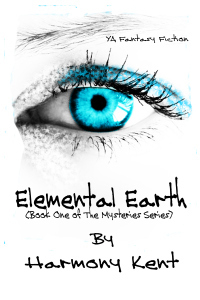 A.My latest fantasy novel is a Young Adult fantasy, and is the first in what will be a series. In Elemental Earth, we are introduced to 15-year-old Sarah, a teen with a rocky home life, and on the fringe of things at school. She has become disinterested, disillusioned, and angry. On a personal level, she is attempting to work out who she is, and what her relationship to her life is, as well as having to deal with her feelings of inadequacy.
A.My latest fantasy novel is a Young Adult fantasy, and is the first in what will be a series. In Elemental Earth, we are introduced to 15-year-old Sarah, a teen with a rocky home life, and on the fringe of things at school. She has become disinterested, disillusioned, and angry. On a personal level, she is attempting to work out who she is, and what her relationship to her life is, as well as having to deal with her feelings of inadequacy.
Everything is mundane until a new girl shows up at school: Imogen. It’s hate at first sight, and when she sends Sarah notes that disappear as soon as they’ve been read, Sarah just gets more annoyed. Who is this girl, and what does she want with Sarah?
When she meets a boy much older than her, she agrees to go on a date with him out of a sense of rebellion. But he isn’t all he seems, and she ends up being kidnapped. The rescue party isn’t what she expects: a platoon of earth gnomes.
Garl, the king of the gnomes, has to be my favourite character. He has sass in buckets, and I love him to bits. He plays a pivotal role in bringing Sarah out of herself and helping her to adapt to her new life in an alternate realm of reality. Sarah continues to rebel, and resists the role everyone seems to be trying to pin on her. Meanwhile, her best friend is missing and big trouble is brewing. If only she’d stuck to applied math and the odd pillow fight.
Q. How do you balance being a multi-genre author?
A. Being a multi-genre author just kind of happened. I didn’t plan it. But then, I’ve learned not to spend too much time on plans: they’re just subject to change anyway. All we can do is to give life our best guess. The key is adaptation and flexibility. Going with the flow holds true in my everyday life as much as it does in my writing.
I suppose that my being a multi-genre reader has influenced my writing greatly. All of my books have an element of magic or the fantastical, except for my latest book, Finding Katie, which is my only book to date that is based wholly in what we call reality. The possible downside to being a multi-genre writer is that my readers can’t put me into any one box. However, on the plus side, they are also guaranteed surprises.
For me, the important thing is that no matter what I write, I pull my reader out of their seat and into the book. For some readers, genre is all-important, but there are more multi-genre readers out there than I had ever imagined.
Q. What are your fantasy genre inspirations?
A. My inspirations come from the classics such as Tolkien’s The Hobbit and Anne McCaffrey’s Dragons of Pern. I also fell in love with Guy Gavriel Kay’s The Summer Tree when I read this as a young woman (yep, I can just about remember then!) Basically, anything with magic in, or an alternate reality, piques my interest. Any book that allows me to forget I’m reading is an inspiring read. Lately, my top genre has become science fiction and dystopian fiction … especially when the book has elements of the two. I do have to confess to being a fan of the Harry Potter books (ahem); but no, I won’t admit to how many times I’ve read them
Q. Are any of your fantasy characters inspired by anyone in real life?
A. Characters in my books tend to be an amalgamation of lots of folks in my life. I haven’t, as yet, based a character on one person in particular.
Q. What’s the name of your latest project?
A. The name of my latest project is When Shadows Fall, and it is to be a sci-fi/dystopian novel.
Q. How have you changed as an author since you first self-published?
A. My writing voice is much stronger. I am much more confident than I ever was. Since I published my first book, I have undergone a steep learning curve in all areas of self-publishing. One thing I hadn’t expected was how much I would come to enjoy designing book covers and making book trailer movies.
Q. What are your most and least favorite activities as an author?
A. My least favourite activity as an author is the marketing and sales side of things. It just is not my forte at all. My favourite activity is writing when the characters have taken me over and invaded my mind. When that happens, they write the book and I just follow along for the ride. Of course, it’s not always so easy, but that’s when it feels truly great. I think the plot twists in The Glade take the readers so much by surprise, because they took the author by surprise too.
Bio:
 Indie Author Harmony Kent has written a number of books. The Battle for Brisingamen, her first novel, is a work of fantasy fiction and was approved by Awesome Indies within weeks of its release. Her second book, The Glade, shows her equally at home in the realms of mystery, suspense and thriller – with a dash of magical realism. This book has also been approved for the Awesome Indies List. The Glade was awarded the IndieBRAG Medallion in July 2014. Harmony’s third book (Elemental Earth) is Young Adult Fantasy Fiction, and was published 31st July 2014. With more books already in progress, she is well on her way to being a firmly established multi genre author. As well as being an avid reader and writer, Harmony also offers editing, proof reading, manuscript appraisal and beta reading services. As well as reviewing and supporting her fellow indie authors, Harmony works hard to promote and protect high standards within the indie publishing arena. She is always on the look out for talent and excellence, and will freely promote any authors or books who she feels have these attributes.
Indie Author Harmony Kent has written a number of books. The Battle for Brisingamen, her first novel, is a work of fantasy fiction and was approved by Awesome Indies within weeks of its release. Her second book, The Glade, shows her equally at home in the realms of mystery, suspense and thriller – with a dash of magical realism. This book has also been approved for the Awesome Indies List. The Glade was awarded the IndieBRAG Medallion in July 2014. Harmony’s third book (Elemental Earth) is Young Adult Fantasy Fiction, and was published 31st July 2014. With more books already in progress, she is well on her way to being a firmly established multi genre author. As well as being an avid reader and writer, Harmony also offers editing, proof reading, manuscript appraisal and beta reading services. As well as reviewing and supporting her fellow indie authors, Harmony works hard to promote and protect high standards within the indie publishing arena. She is always on the look out for talent and excellence, and will freely promote any authors or books who she feels have these attributes.
Well, that’s the official biography… Harmony also has violent tendencies and forced me to add a not quite so official version…
Harmony Kent is famous for her laughter, and has made quite the name for herself… she’s also, um, a writer… and fairly well known for that too. She lives in rural Cornwall with her ever-present sense of humour and quirky neighbours. She is single and not admitting to her age.
Here are ten things she thinks you ought to know about her …
Born in 2013 (at least the author was …)
Really boring
Has absolutely no sense of humour
Biographer is a compulsive liar
Reads … a lot
Writes … even more
Completely sane(in)
Neighbours are nuts
If you’re feeling extra brave she’s around
Online …
You can connect Harmony and view her books via the following social media and book links:
Website Twitter Facebook Goodreads
Amazon US Author Page Amazon UK Author Page 4Wills Publishing Author Page:
Thanks to Harmony for being featured today in Fantasy Authors Unplugged. Please take some time to visit this award-winning author’s pages to learn more about her fantasy books. If you’re a fantasy author and would like to be interviewed for “Fantasy Authors Unplugged” just contact me via email or one of my social media channels and we’ll set one up.
Please share your thoughts and ideas in the comments section. I’d also love to connect with you over social media so check my contact page for that information. See the News page for announcements and remember to sign-up to receive news and posts by email. I’ve added a new sign-up tab on my FaceBook page to simplify the process. New followers can download The Black Bag via free coupon today! Also, the cover of my book, The Bow of Destiny, was revealed recently so take a look.
Follow Blog via Email
Enter your email address to follow this blog and receive notifications of new posts by email.
Filed under: 4WillsPublishing, Amazon, Blogging, Cover Reveal, Creativity, Elemental Earth, Fantasy, Fantasy Authors Unplugged, Fiction, Goodreads, Indie Publishing, Marketing, Rave Review Book Club, Rave Soup For The Soul, Self-publishing, Social Media, The Battle for Brisingamen, The Black Bag, The Bow of Destiny, The Glade, Twitter, Writing Tagged: blogging, Coverart, creativity, Elemental Earth, Facebook, Fantasy Authors Unplugged, Fantasy Fiction, Goodreads, Harmony Kent, Indie Publishing, Marketing, Rave Reviews Book Club, Self-publishing, Social Media, The Battle for Brisingamen, The Black Bag, The Bow of Destiny, The Glade, Tips, Twitter, writing








May 18, 2015
5 Ways You Can Harness Your Limited Writing Time
 In a post last week, I wrote how I wanted to take better advantage of time by breaking one habit – believing limited time meant I had no time to write. But what ways can a writer re-gain control of their daily opportunities to write? Here are a few strategies I’m trying. Again, the idea isn’t to frantically write in every spare moment but to find ways to be a bit more productive instead.
In a post last week, I wrote how I wanted to take better advantage of time by breaking one habit – believing limited time meant I had no time to write. But what ways can a writer re-gain control of their daily opportunities to write? Here are a few strategies I’m trying. Again, the idea isn’t to frantically write in every spare moment but to find ways to be a bit more productive instead.
Follow Blog via Email
Enter your email address to follow this blog and receive notifications of new posts by email.
1. I’ve stopped believing I don’t have time. This habit formed over time when I was tired, rushed or distracted. It was a slippery slope of one day that coalesced into many. I now look for spare moments and decide whether I actually have time to write – really write, not just post on social media where I end up wasting more time.
2. Make notes – I’m using features in Scrivener to make notes about my thoughts when I stop writing. This way I have a reference on which to re-gain my creative mindset when I have those small bits of time to write. Too often, I don’t use the time because I don’t know where to start – or how. Shifting gears between tasks in a busy day means creativity gets buried. Having a reference point gets me started.
 3. Try a short, creative exercise – getting back to creativity means shutting down your practical mental state. You can do this rather quickly by writing a few brainstorming words about your topic or story. Doodling in curves, especially in color, can help too. But again, being time conscious means that you don’t take too long at this. I suspect that the more you practice changing mental gears the better you become. Likewise, I think that stopping these exercises means you lose the ability to be mentally nimble.
3. Try a short, creative exercise – getting back to creativity means shutting down your practical mental state. You can do this rather quickly by writing a few brainstorming words about your topic or story. Doodling in curves, especially in color, can help too. But again, being time conscious means that you don’t take too long at this. I suspect that the more you practice changing mental gears the better you become. Likewise, I think that stopping these exercises means you lose the ability to be mentally nimble.
4. Building on the notes – try journaling earlier in the day where you focus your effort on your story and other projects. As you journal imagine aspects of what you can write during the day and note these. Are there fictional conversations that you can distill from your thoughts as well as other details. If you have other projects, what ideas do you want to address. This brings all those vague notions from your mind so that you have something definite about which you can write when ready. The main idea is to journal with the purpose of bringing ideas to the forefront and then having them ready to use at a moment’s notice.
 5. Don’t waste valuable minutes when time is short and you can’t get busy on a particular project. If you have other projects to work on like writing a blog post be ready to shift to that and accomplish something. Just making progress writing is positive enough to keep you going later. Also, I’ve found that being creative one way actually stimulates my writing in other ways. If you want to use small blocks of time then use them any way you can just have a fall-back plan if your stuck.
5. Don’t waste valuable minutes when time is short and you can’t get busy on a particular project. If you have other projects to work on like writing a blog post be ready to shift to that and accomplish something. Just making progress writing is positive enough to keep you going later. Also, I’ve found that being creative one way actually stimulates my writing in other ways. If you want to use small blocks of time then use them any way you can just have a fall-back plan if your stuck.
What strategies do you have for writing in limited time? Do you find that you often think you don’t have time to write but spend the time on something unproductive? Please share your thoughts and ideas in the comments section. I’d also love to connect with you over social media so check my Contact page for that information. See the News page for announcements and remember to sign-up to receive news and posts by email. I’ve added a new sign-up tab on my FaceBook page to simplify the process. New followers can download The Black Bag via free coupon today! Also, the cover of my book, The Bow of Destiny, was revealed recently so take a look.
Follow Blog via Email
Enter your email address to follow this blog and receive notifications of new posts by email.
Photos from Morguefile.com – free section
Filed under: Blogging, Choices, Cover Reveal, Creativity, Editing, Fiction, Goodreads, Indie Publishing, Non-fiction, Pinterest, Planning, Rave Review Book Club, Self-publishing, Short Fiction, Short Stories, Social Media, The Black Bag, The Bow of Destiny, The Bow of Hart Saga, Tips, Twitter, What is Needed, Writing Tagged: blogging, creativity, Editing, Facebook, Goals, Goodreads, Indie Publishing, P. H. Solomon, Planning, Rave Reviews Book Club, Self-publishing, Social Media, The Black Bag, The Bow of Destiny, Tips, Twitter, writing








May 17, 2015
Configuring You Document Templates in Scrivener
Scrivener is a powerful writing tool. I write about it weekly with tips and usage ideas. To read more of my posts click the Scrivener tag or category at the end of the page.
I had a question from a new follower to the blog in the comments section about formatting a document template. She wanted to know how to work with the document template to retain formatting. I’ve answered the question but I thought I’d go a little further with it in a post to add more details.
Follow Blog via Email
Enter your email address to follow this blog and receive notifications of new posts by email.
As for formatting a document template there are any number of ways to accomplish this to suit your needs. You may simply want to add specific content, fonts, spacing, etc. Depending on what your needs are there are several points to discuss.
1. If you desire the font to be formatted consistently this is a straightforward matter. While clicked into the document template (cursor blinking like you’re ready to type), you can change the font settings from the Format Bar that is usually turned on by default. If yours isn’t turned on click on Format and slide down the menu and click on Format Bar. It will appear at the top of the editor. From here you can change what the font is, the size and whether it’s set to Bold, Itlacs or Underline (or any combination of the three). Additionally, you can also set the alignment and any other miscellaneous settings available.
2. If you want specific space formatted you’ll need to access that by clicking on Format, sliding to Text to get the fly-out menu and click on spacing. From the window that appears you can configure spacing for indention, single/double space, etc.
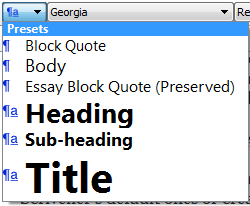 3. If you work with presets (which appear in the left end of the Format Bar), you can choose one of Scrivener’s default ones or create a new one yourself.
3. If you work with presets (which appear in the left end of the Format Bar), you can choose one of Scrivener’s default ones or create a new one yourself.
4. If you are adding a table or list to your document template you can format these from the Format Bar
5. Explore other settings in the Format menu or the Format Bar – these may not be needed for a document template since many are for changing formatting in existing documents (more on these another day).
6. Add re-usable content such as a common introduction or ending for a blog post to the document template. Remember what you add as content or formatting to your document template will be automatically in any new documents you create using it. With this fact in mind, be aware of what you add and format. Can you add more content? Think about what you click to change whenever you create a new document – that’s what you want to configure in your document template.
 What do you configure or add in you new documents? Can you add put these changes into your document templates? Please share your thoughts and ideas in the comments section. I’d also love to connect with you over social media so check my Contact page for that information. See the News page for announcements and remember to sign-up to receive news and posts by email. I’ve added a new sign-up tab on my FaceBook page to simplify the process. New followers can download The Black Bag via free coupon today! Also, the cover of my book, The Bow of Destiny, was revealed recently so take a look.
What do you configure or add in you new documents? Can you add put these changes into your document templates? Please share your thoughts and ideas in the comments section. I’d also love to connect with you over social media so check my Contact page for that information. See the News page for announcements and remember to sign-up to receive news and posts by email. I’ve added a new sign-up tab on my FaceBook page to simplify the process. New followers can download The Black Bag via free coupon today! Also, the cover of my book, The Bow of Destiny, was revealed recently so take a look.
Follow Blog via Email
Enter your email address to follow this blog and receive notifications of new posts by email.
Just as a note: I am not affiliated with Scrivener in any official capacity. For support questions, pricing and other concerns please contact the vendor.
Filed under: Blogging, Cover Reveal, Creativity, Editing, Indie Publishing, Marketing, Non-fiction, Pinterest, Planning, Scrivener, Self-publishing, Social Media, The Black Bag, The Bow of Destiny, Tips, Twitter, Writing Tagged: blogging, Coverart, creativity, Document Template, Editing, Facebook, Formatting, Indie Publishing, P. H. Solomon, Pinterest, Planning, Scrivener, Self-publishing, Social Media, The Black Bag, The Bow of Destiny, Tips, Twitter, writing








May 16, 2015
Styling Your E-Book With Proper Formatting
Introduction
The use of styles in word processing is a bit esoteric for many users. However, when formatting an e-book, styles can be very handy. With that in mind, I’ll follow-up on last week’s post about formatting by digging a little deeper into what styles are, why they are important to e-book formatting and how to use them. As a reminder, create a back-up copy of your content before formatting so you can easily revert to the original.
Does Your Manuscript Have Style?
So what’s a style and does your book have it? Well, when considering formatting, this is not so much a question of writing style as visual presentation. You don’t want to worry about this while your actually creating your content but when you are formatting styles add, well – style.
Styles, as implied by the term, is a way of changing the appearance of your content. That’s a simple statement but there’s much more to than that. It’s basically using a template of different format settings. In Word this is done via the Styles section of the Home menu. Using different styles means you can change headings, first lines of chapters and other sections of your content when a simple click. It’s very handy when it comes to formatting.
But why should you use it?
Follow Blog via Email
Enter your email address to follow this blog and receive notifications of new posts by email.
The Importance of Styles
Your e-book needs style. It’s like when Kramer (think Seinfeld) found the wide-brimmed hat when he was wearing the coat from “Joseph and the Amazing Technicolor Dreamcoat”. It’s just not as gaudy. The use of styles adds effects to your manuscript that improve reader experience.
For instance, if you have a book with headings or chapter titles a different style that’s in bold with larger font size can be helpful. However, you don’t want to just make those changes anywhere since they can create discontinuity if used improperly like I just did. Additionally, the first line of a chapter or scene can be enhanced so that it’s noticeably different from the rest of the text and alerts readers to the change. Styles also set apart other types of content in your e-book such as copyright, end material and block quotes (non-fiction).
So that’s a thumbnail of what styles are and why you need them. But how do you use them?
How To Use Styles
The use of styles can actually range from quite simple to complex. I’ll keep it simple here for the sake of brevity but a more thorough discussion can be found in the Smashwords Style Guide. Let’s scratch the surface to get started.
Pre-set styles are on the Home menu in Word 2007 or later. My screenshots are from Word 2010 so yours may be different. First of all there are several styles of which you may need to make use: First Line of a Chapter, Normal, Block (for non-fiction), etc. These are all changed or created from the Styles Manager. It must be noted that just highlighting and changing formatting to suit your needs may not mean that these are picked up correctly when processed by Kindle or Smashwords. Styles manage formatting on a larger, more consistent scale and allows you to change the style easily with a click or two.
In Word 2010 to modify a style right click on the style and choose modify:
Follow Blog via Email
Enter your email address to follow this blog and receive notifications of new posts by email.
Next click on the format button in the lower left and choose Paragraph.
The paragraph properties for this style are displayed.
Settings such as indent, line spacing, etc can be changed here. Try to make your “Normal” style consistent with what the whole book will be. If you will be using a first line style to forego the use of indent for the beginning of a chapter try creating a separate style. There are pre-set styles for headings, titles, subtitles, etc so don’t try to re-invent these – just change them to suit your needs. Apply the various styles besides Normal wherever necessary by click to that location and clicking the applicable style and the text will be changed.
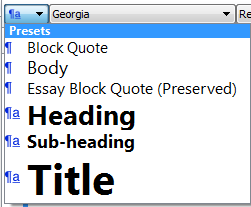 That’s the basics of managing and applying styles in Word. Scrivener is similar in that it comes with presets like Word and you can apply them from the format bar. I’ll discuss these in a later post but for now these should help you learn the basics of formatting for e-books. For more information I suggest downloading Mark Coker’s free Smashwords Style Guide.
That’s the basics of managing and applying styles in Word. Scrivener is similar in that it comes with presets like Word and you can apply them from the format bar. I’ll discuss these in a later post but for now these should help you learn the basics of formatting for e-books. For more information I suggest downloading Mark Coker’s free Smashwords Style Guide.
Have you tried formatting your e-book? What tips or tricks do you use with formatting? Please share your thoughts and ideas in the comments section. I’d also love to connect with you over social media so check my Contact page for that information. See the News page for announcements and remember to sign-up to receive news and posts by email. I’ve added a new sign-up tab on my FaceBook page to simplify the process. New followers can download The Black Bag via free coupon today! Also, the cover of my book, The Bow of Destiny, was revealed recently so take a look.
Follow Blog via Email
Enter your email address to follow this blog and receive notifications of new posts by email.

Filed under: Blogging, Cover Reveal, Creativity, Editing, Indie Publishing, Planning, Scrivener, Self-publishing, Social Media, Tech Tips, Templates, Tips, Writing Tagged: blogging, creativity, Editing, Facebook, Formatting, Indie Publishing, P. H. Solomon, Planning, Self-publishing, Smashwords, Styles, The Black Bag, The Bow of Destiny, Tips, Twitter, Word, writing

May 15, 2015
Promote Your Writing With Scrivener
 Scrivener is a powerful writing tool. I write about it weekly with tips and usage ideas. To read more of my posts click the Scrivener tag or category at the end of the page.
Scrivener is a powerful writing tool. I write about it weekly with tips and usage ideas. To read more of my posts click the Scrivener tag or category at the end of the page.
Writing is easier than every with Scrivener. But with all that production you’ve got to release some work to the public. When you launch your book you need to hit the road and do some marketing.
One of the most used marketing tools is the blog tour. Why not use Scrivener to develop your blog tours? Much like a blog template you can use a blog tour template to write for all your stops and keep them organized.
Follow Blog via Email
Enter your email address to follow this blog and receive notifications of new posts by email.
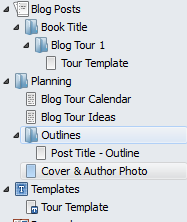 Try setting up a project for your book release and organize it by blog tour. Get a head start as tour ideas come to mind and write them down. Then when it comes time to release your work and do frequent blog tours you’ll have plenty of material for all the stops.
Try setting up a project for your book release and organize it by blog tour. Get a head start as tour ideas come to mind and write them down. Then when it comes time to release your work and do frequent blog tours you’ll have plenty of material for all the stops.
I’ve modified a blog template to use specifically for with blog tours which you can download for free here. Organize your binder, use the table in the calendar container to track your schedule. Use the document template or create new ones for your various needs as they arise.
Want to develop your own templates? Here are instructions on creating and managing project templates. Need to know more about making document templates? Click here to learn to create a document template and here to learn more about what to put in them.
 Are you looking for a way to organize your blog tour ideas? Please share your thoughts and ideas in the comments section. I’d also love to connect with you over social media so check my Contact page for that information. See the News page for announcements and remember to sign-up to receive news and posts by email. I’ve added a new sign-up tab on my FaceBook page to simplify the process. New followers can download The Black Bag via free coupon today! Also, the cover of my book, The Bow of Destiny, was revealed recently so take a look.
Are you looking for a way to organize your blog tour ideas? Please share your thoughts and ideas in the comments section. I’d also love to connect with you over social media so check my Contact page for that information. See the News page for announcements and remember to sign-up to receive news and posts by email. I’ve added a new sign-up tab on my FaceBook page to simplify the process. New followers can download The Black Bag via free coupon today! Also, the cover of my book, The Bow of Destiny, was revealed recently so take a look.
Follow Blog via Email
Enter your email address to follow this blog and receive notifications of new posts by email.
Just as a note: I am not affliated with Scrivener in any official capacity. For support questions, pricing and other concerns please contact the vendor.
Filed under: Blog Tour, Blogging, Cover Reveal, Creativity, Indie Publishing, Marketing, Planning, Scrivener, Self-publishing, Social Media, Tech Tips, Templates, The Black Bag, The Bow of Destiny, Tips, Twitter, Writing Tagged: Announcement, Blog Tour, blog tour template, Coverart, creativity, Facebook, Indie Publishing, Launch, Marketing, P. H. Solomon, Planning, Scrivener, Social Media, Template, The Black Bag, The Bow of Destiny, writing

May 10, 2015
Using Scrivener As Your Reference Library
Scrivener is a powerful writing tool. I write about it weekly with tips and usage ideas. To read more of my posts click the Scrivener tag or category at the end of the page.
Follow Blog via Email
Enter your email address to follow this blog and receive notifications of new posts by email.
The Inspector in Scrivener hides a number of useful features. Previous posts on Archer’s Aim regarding the Inspector include:
Inspection! What Scrivener’s Other Bar Does
Strategic Usage of Snapshots in Scrivener
Keywords & Project Searches in Scrivener
Lost Your Scratchpad? Here It Is In Scrivener!
This week we continue with use of Document References from the Inspector.
Just as a refresher, the Inspector is turned on by clicking on View in Scrivener. Slide down the menu to Layout and click on Inspector in the fly-out menu that is displayed (for keyboard command enthusiasts use CTRL + Shift + I).
The Document References are accessed using the second from the left button located at the bottom of the Inspector.
To toggle between Document References and Project References click the up-down arrows.
There are several other controls for the Document References. To Add/Remove references click on the +/- buttons. The + button reveals a menu that allows adding internal references from the project as well as external references (Look-up and Add or Create), all of which are pictured below:

The Add Reference Menu Displayed

Add Internal References Menu Displayed

Adding An External Reference Displayed
Personally, I’ve been using Document References of late when writing posts. If I start researching aspects of my post then I add the references that I find which are usually external. So when I add the external reference I give it a title that makes sense and the web link to the page. This way I can access the information or add the link into a post. To add the referenced web link to your document, double click on the reference to open it. Then copy/paste the page link that’s opened into the your document via Scrivener’s link command.
Using references can also be used in various types of writing besides blog posts. The internal project references are also very valuable for larger projects, especially those involving research.
Please share your thoughts and ideas in the comments section. I’d also love to connect with you over social media so check my Contact page for that information. See the News page for announcements and remember to sign-up to receive news and posts by email. I’ve added a new sign-up tab on my FaceBook page to simplify the process. New followers can download The Black Bag via free coupon today! Also, the cover of my book, The Bow of Destiny, was revealed recently so take a look.
Follow Blog via Email
Enter your email address to follow this blog and receive notifications of new posts by email.
Just as a note: I am not affiliated with Scrivener in any official capacity. For support questions, pricing and other concerns please contact the vendor.
Filed under: Blogging, Cover Reveal, Creativity, Editing, Indie Publishing, Non-fiction, Pinterest, Planning, Reviews, Scrivener, Self-publishing, Social Media, Tech Tips, The Black Bag, The Bow of Destiny, Tips, Twitter, Writing Tagged: blogging, Coverart, creativity, Document Reference, Editing, Facebook, Indie Publishing, Inspector, P. H. Solomon, Planning, Scrivener, Self-publishing, Social Media, The Black Bag, The Bow of Destiny, writing








May 8, 2015
Publish traditionally, solo self-publish or something else? Advice for the 2015 writer
 PHS:
PHS:
Reblogging on Archer’s Aim – good insights on publishing which really have me thinking about my own approach.
 Originally posted on Nail Your Novel:
Originally posted on Nail Your Novel:
 Last year I wrote a post about whether I’d advise an author to publish or selfpublish. A year on, the landscape for authors is remarkably different – or perhaps not remarkable if you’ve been waiting for a bubble to burst.
Last year I wrote a post about whether I’d advise an author to publish or selfpublish. A year on, the landscape for authors is remarkably different – or perhaps not remarkable if you’ve been waiting for a bubble to burst.
Indie authors have seen sales plummet because of the sheer numbers of books available, and subscription schemes such as Kindle Unlimited have created a breed of readers who won’t shop outside a limited free list.
Might this mean it’s better to be traditionally published?
Not from what I’ve seen. My friends with trad deals aren’t having a good time either. Leaving aside royalties and advances (which seem to offer little financial reward for all the hard work writing), their books aren’t getting a decent chance for a long-term future.
A friend whose first novel won a major award in 2012 has just watched his fourth novel launch with no more…
View original 1,330 more words
Filed under: Uncategorized









